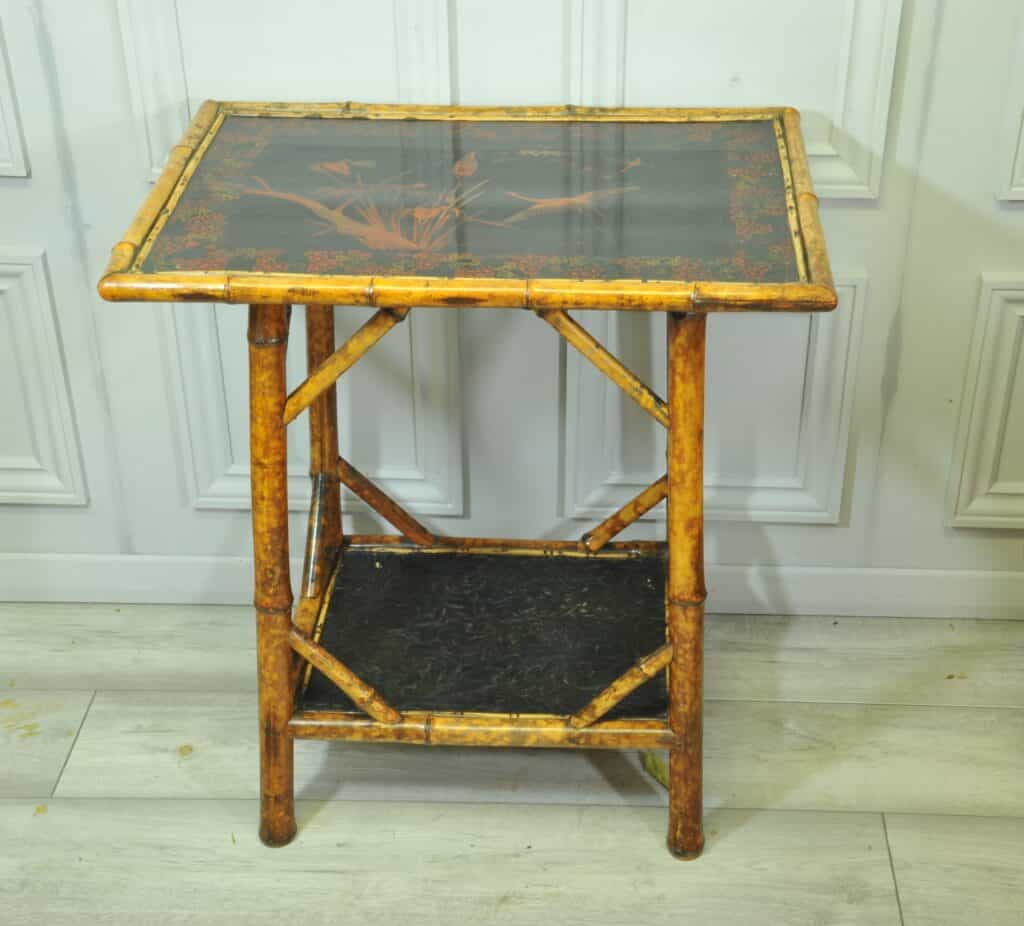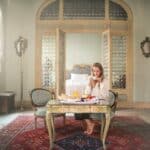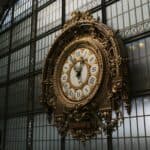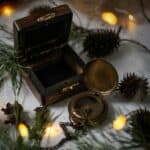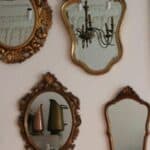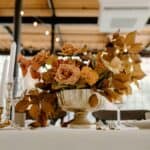Looking to learn more about chinoiserie antiques? With original finishes on trend this year, this week, the Village Vintage team take a closer look at chinoiserie and lacquered items, plus discuss some of the items we have available at our Essex/Suffolk dealership today!
What is Chinoiserie?
Chinoiserie, is a term derived from the French word "Chinois," meaning "Chinese," and represents a European interpretation and imitation of Chinese and East Asian artistic traditions. This style, which peaked in popularity during the 17th and 18th centuries, was not just a trend but a symbol of global trade and cultural exchange. The fascination with the exotic and the unfamiliar led to the creation of stunning art and furniture pieces that are still highly prized today!
One of the most exquisite aspects of Chinoiserie is the use of lacquer. This is a technique that originated in East Asia and was later adopted and adapted by European craftsmen. Lacquered antiques, particularly those with original finishes, are some of the most sought-after pieces in the world of antiques, valued for their beauty, craftsmanship, and historical significance.
The Origins of Chinoiserie
Chinoiserie emerged in Europe during the late Renaissance, a time when the continent was increasingly fascinated by the exoticism of the East. The expansion of trade routes, particularly the Silk Road and maritime routes, brought an influx of goods from China and Japan. This included porcelain, silk, and lacquerware. These items were not only luxury commodities but also windows into a culture that was vastly different from anything Europeans had known.
As these exotic goods became more available, European artists and craftsmen began to imitate and reinterpret them. Chinoiserie was born out of this cross-cultural exchange, blending elements of Eastern design with Western tastes and techniques. It was characterised by fanciful depictions of imaginary Chinese landscapes, pagodas, dragons, and figures, often infused with a sense of whimsy and fantasy that was more reflective of European imagination than of authentic Chinese culture.
The Art of Lacquer
Lacquer is a resinous substance obtained from the sap of the lacquer tree, native to China, Japan, and other parts of East Asia. The art of lacquerware has been practiced in these regions for thousands of years, with some of the earliest examples dating back to the Neolithic period in China.
The process of creating lacquerware is painstaking and time-consuming. The lacquer is applied in thin layers to a wooden or metal surface, with each layer being carefully dried and polished before the next is added. The result is a smooth, glossy finish that is not only beautiful but also highly durable, resistant to water, heat, and insects. The most refined lacquer pieces can have dozens of layers, each adding depth and richness to the final product.
In the context of Chinoiserie, European craftsmen sought to replicate the look and feel of Asian lacquerware. However, the true lacquer tree was not native to Europe, so they had to develop alternative methods. This led to the creation of "japanning," a European technique that mimicked the appearance of Asian lacquer using varnishes and resins. While not as durable as authentic lacquer, japanned pieces still exhibit the rich, glossy finish that makes lacquerware so appealing.
Lacquered Antiques with Original Finishes
One of the most desirable features of lacquered chinoiserie antiques, is the presence of their original finish. Over time, many lacquered items have been subjected to restoration, often involving the addition of new layers of lacquer or varnish. While these restorations can help preserve the piece, they can also alter its appearance and reduce its value to collectors.
An original finish, on the other hand, is a testament to the piece's authenticity and historical integrity. It reflects the skill and artistry of the original craftsman, as well as the care that has been taken to preserve the item over the centuries. The natural aging of the lacquer, with its subtle cracks, patina, and variations in colour, adds character and depth to the piece, telling a story that is as much about the passage of time as it is about the object itself.
Collectors of Chinoiserie and lacquered antiques are often drawn to pieces with original finishes because they offer a direct connection to the past. These items are not just decorative objects; they are historical artifacts that have survived the vicissitudes of time, carrying with them the marks of their journey.
Chinoiserie Lacquer Work for Louis XIV
One of the most famous examples of Chinoiserie lacquer work is the series of lacquered cabinets created for Louis XIV of France. These cabinets, known as "Boulle cabinets" after their creator André-Charles Boulle, were masterpieces of craftsmanship, combining ebony, tortoiseshell, and brass with intricate lacquered panels. The lacquer on these pieces was often imported from China or Japan, making them incredibly valuable and prestigious items in the royal court.
Lacquered and Chinoiserie Antiques at Village Vintage
Antique Bamboo Lacquered Side Table: An English two-tier bamboo side table. In very good condition for its age, this beautiful piece displays an oriental scene of Flamingo and Reed hand decoration under a good, lacquered finish. The lower tier is a decorated with an embossed leather panel.
Two Tier Bamboo and Lacquered Side Table: This vintage two tier bamboo side table is in original condition with two finely lacquered red and gold panels depicting exotic birds. Perfect for a lamp or bedside table.
For more of our beautiful, lacquered items, click here.
Get in Touch
If you’re interested in knowing more about chinoiserie antiques or would like to view any of our items in person, our team would love to help. We are passionate about delivering the best results for our valued customers. Simply get in touch with us by filling out our contact form and one of our friendly team will get back to you.

